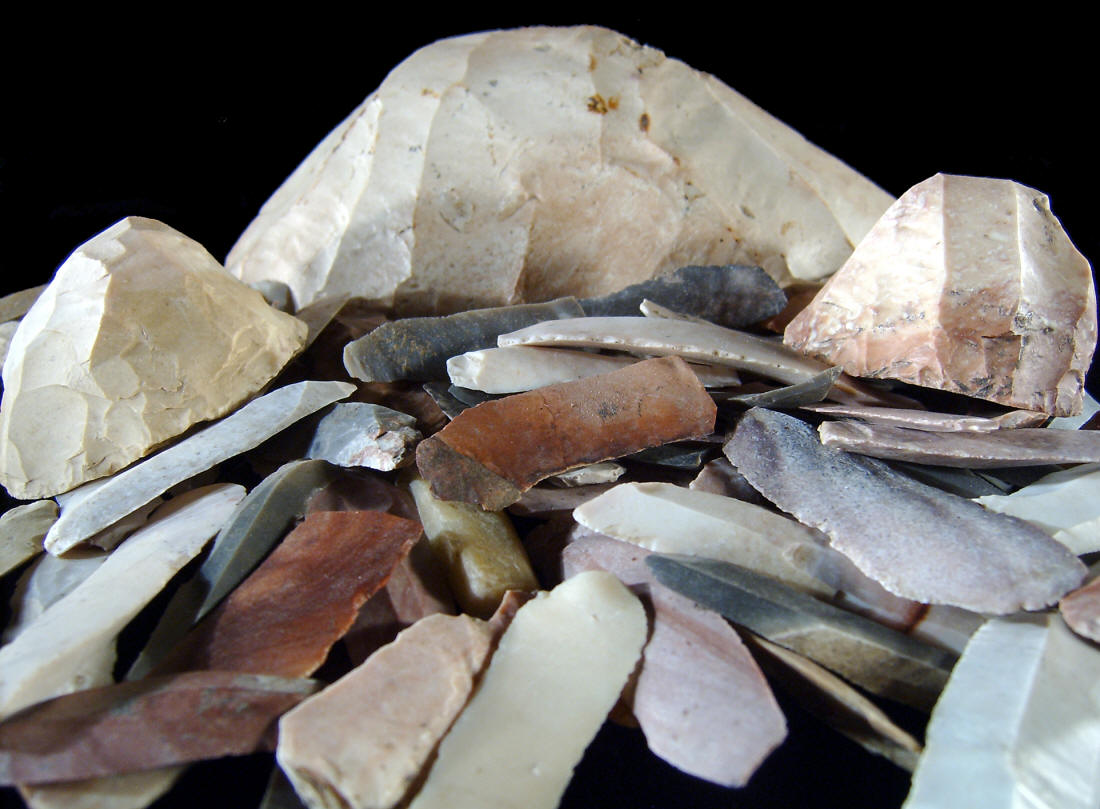|
CORES & LAMELLAR
In North America, core and blade technology solidly appears during
the Early Paleo-Indian Clovis, again in the Eastern Middle Woodland Hopewell
and, in a minor way with micro-blades on some Mississippian shell drilling sites. The
three cores in this picture are surrounded by a large number of core
blades, called lamellar blades. These were the most common knife
form used by the Hopewell people. In 1961 William Fecht lists 47
different types of artifacts he recorded from the Snyders site. For
lamellar flake knives, rather than a counted number he wrote in the
number recovered as "many." Archaeologist Anta Montet-White
wrote in 1968 that, "The small prismatic blades are the largest
component of the Hopwellian industries. Specimens from burial sites
show no visible traces of wear. Village assemblages yielded abundant
series of unmodified blades as well as retouched specimens." Large numbers of them were found on the
Snyders site.
|
